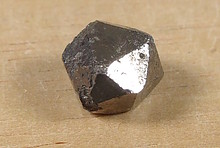Home PageAbout MindatThe Mindat ManualHistory of MindatCopyright StatusWho We AreContact UsAdvertise on Mindat
Donate to MindatCorporate SponsorshipSponsor a PageSponsored PagesMindat AdvertisersAdvertise on Mindat
Learning CenterWhat is a mineral?The most common minerals on earthInformation for EducatorsMindat ArticlesThe ElementsThe Rock H. Currier Digital LibraryGeologic Time
Minerals by PropertiesMinerals by ChemistryAdvanced Locality SearchRandom MineralRandom LocalitySearch by minIDLocalities Near MeSearch ArticlesSearch GlossaryMore Search Options
The Mindat ManualAdd a New PhotoRate PhotosLocality Edit ReportCoordinate Completion ReportAdd Glossary Item
Mining CompaniesStatisticsUsersMineral MuseumsClubs & OrganizationsMineral Shows & EventsThe Mindat DirectoryDevice SettingsThe Mineral Quiz
Photo SearchPhoto GalleriesSearch by ColorNew Photos TodayNew Photos YesterdayMembers' Photo GalleriesPast Photo of the Day GalleryPhotography
╳Discussions
💬 Home🔎 Search📅 LatestGroups
EducationOpen discussion area.Fakes & FraudsOpen discussion area.Field CollectingOpen discussion area.FossilsOpen discussion area.Gems and GemologyOpen discussion area.GeneralOpen discussion area.How to ContributeOpen discussion area.Identity HelpOpen discussion area.Improving Mindat.orgOpen discussion area.LocalitiesOpen discussion area.Lost and Stolen SpecimensOpen discussion area.MarketplaceOpen discussion area.MeteoritesOpen discussion area.Mindat ProductsOpen discussion area.Mineral ExchangesOpen discussion area.Mineral PhotographyOpen discussion area.Mineral ShowsOpen discussion area.Mineralogical ClassificationOpen discussion area.Mineralogy CourseOpen discussion area.MineralsOpen discussion area.Minerals and MuseumsOpen discussion area.PhotosOpen discussion area.Techniques for CollectorsOpen discussion area.The Rock H. Currier Digital LibraryOpen discussion area.UV MineralsOpen discussion area.Recent Images in Discussions
GeneralSimple tests for minerals and reactivity
2nd Jul 2014 14:57 UTCReiner Mielke Expert
Also there seems to be resistance to changes by Mindat in the basic information on individual minerals because the differences were not noted in the description for the type material. It would be nice to be able to post notes to these individual minerals without having to go through a manager so that others are aware of discrepancies with the understanding that they are not based on published data but observations by people familiar with the mineral species in question. For example information in mindat and the type paper imply that anilite has no cleavage/parting, but some of it has a very good cleavage/parting I think it is important to have that noted on the species page.

2nd Jul 2014 16:39 UTCDonald Peck

2nd Jul 2014 16:42 UTCAlfredo Petrov Manager
Perhaps the best way to handle it would be for anyone with a test they'd like to share to describe it on a "talk page". Open any species page and there is a button near the top to "Discuss Mineral X". That opens a "talk page" forum for that species where anyone can share this type of info and other users can comment on its accuracy and repeatability. If there is a general consensus that something works and that the species involved were correctly identified in the first place, then we can consider putting the info on the Species page. Meanwhile, the proposed info will still be accessible to anyone via this "talk page".
2nd Jul 2014 17:15 UTCReiner Mielke Expert
2nd Jul 2014 17:27 UTCDavid Von Bargen Manager
2nd Jul 2014 17:41 UTCReiner Mielke Expert
Aren't you supposed to be promoting Mindat? Besides, Donald's book may be good but it contains only a fraction of the information that is out there.
2nd Jul 2014 17:51 UTCDavid Von Bargen Manager

2nd Jul 2014 18:43 UTCPhil M. Belley Expert
2nd Jul 2014 18:52 UTCDavid Von Bargen Manager
3rd Jul 2014 01:20 UTCRock Currier Expert

7th Jul 2014 23:22 UTCDana Morong




Mindat.org is an outreach project of the Hudson Institute of Mineralogy, a 501(c)(3) not-for-profit organization.
Copyright © mindat.org and the Hudson Institute of Mineralogy 1993-2024, except where stated. Most political location boundaries are © OpenStreetMap contributors. Mindat.org relies on the contributions of thousands of members and supporters. Founded in 2000 by Jolyon Ralph.
Privacy Policy - Terms & Conditions - Contact Us / DMCA issues - Report a bug/vulnerability Current server date and time: April 27, 2024 02:45:17
Copyright © mindat.org and the Hudson Institute of Mineralogy 1993-2024, except where stated. Most political location boundaries are © OpenStreetMap contributors. Mindat.org relies on the contributions of thousands of members and supporters. Founded in 2000 by Jolyon Ralph.
Privacy Policy - Terms & Conditions - Contact Us / DMCA issues - Report a bug/vulnerability Current server date and time: April 27, 2024 02:45:17











